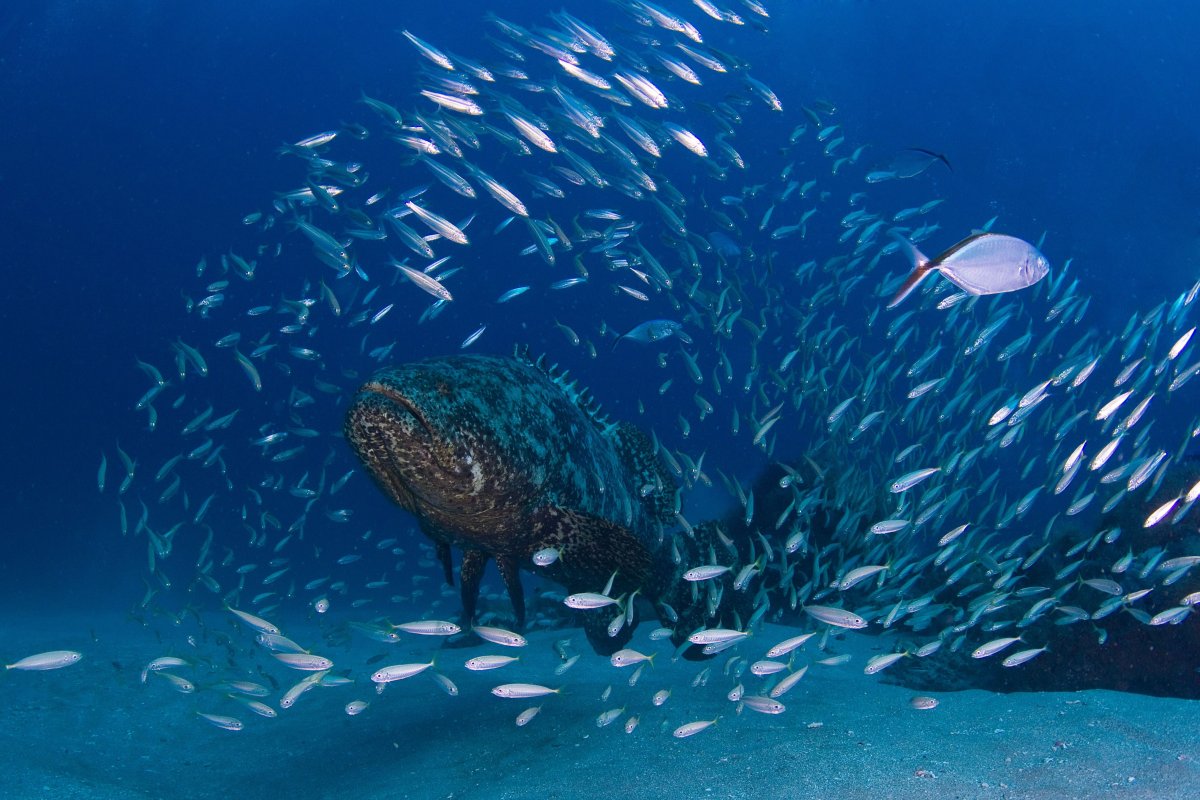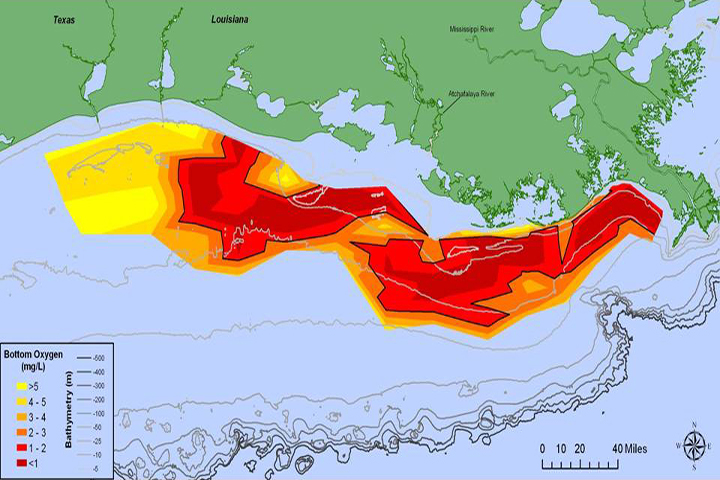A report from the National Oceanic and Atmospheric Administration (NOAA) is warning that a dead zone in the Gulf of Mexico could kill off marine life in an area as large as the state of Connecticut.

The U.S. government agency expects that, for the month of June, the dead zone will cover 17,673 square kilometres of the gulf just off the coasts of Texas and Louisiana.
READ MORE: Climate change making dead zones in world’s waterways worse: study
The dead zone is caused by something called hypoxia, a reduced lack of oxygen in the water, specifically oxygen concentration below two mg/L. The result is a die-off of marine life, most of which are unable to exist in oxygen-poor environments.
The cause of these dead zones is a result of nutrient runoff from agriculture and other human activity. This discharge of nitrogen causes an overgrowth of algae, which in turn sinks and decomposes, devouring oxygen and depleting the surrounding area.
In August 2015, NOAA found that the area was about 22,205 square kilometres, well above average.
The government agency is predicting with 95 per cent confidence that the area will be between 12,609 and 22,013 square kilometres.
The forecast doesn’t take into account other factors, however, such as storms that could change the environment, no discharge from the Mississippi River into the waters and unsual weather factors. All of these could either worsen or improve conditions.
There are about 550 dead zones around the world.



Comments